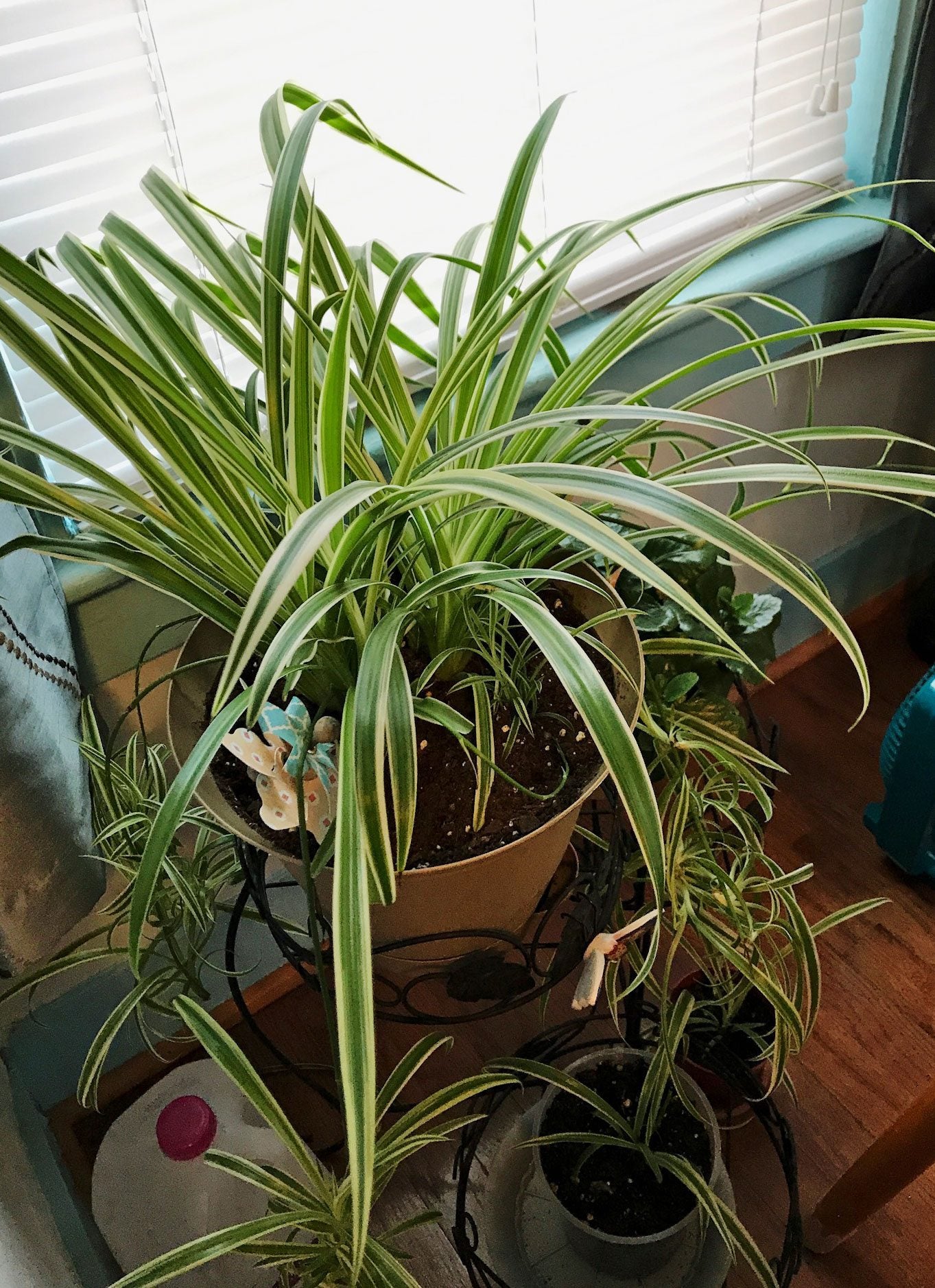Spider Plant Problems: Tips For Getting Spiderettes On Plants


Most interior gardeners are familiar with the charismatic spider plant. This classic houseplant produces numerous dangling clusters of leaves, resembling parachuting baby spiders. If you find your spider plant not producing babies like these, it might simply be due to the young age of the plant or cultural issues such as lighting.
Don't despair, as these types of spider plant problems won't affect the overall health of the plant and can often be corrected with some simple tips. Chlorophytum comosum is one of the most shared houseplants due to the offsets it produces, which can be culled from the parent plant and started as separate spider plants.
The attractive hanging offsets, or babies, occur when a mature plant is in the right conditions. The comment that "my spider plant has no babies" is a common theme in garden blogs.
We will investigate possible reasons for this condition and some easy solutions to get your plant producing these aerial growths with whimsical appeal.
Age and No Babies on Spider Plants
It's awkward to use the tale of the birds and the bees in mammalian relations to describe plant life cycles, but useful at the same time. Spider plants need to be old enough to have these spider-like growths.
What age is appropriate for getting spiderettes on plants? Just as a mammal needs to be mature enough for reproduction, so too, must a plant. A newly sprouted seed of any type cannot be expected to produce fruit, seeds, reproductive vegetative growth or flowers.
An offset that you have recently potted up should be considered a baby plant. It needs time to send out a rich network of roots and establish itself in its environment.
Gardening tips, videos, info and more delivered right to your inbox!
Sign up for the Gardening Know How newsletter today and receive a free copy of our e-book "How to Grow Delicious Tomatoes".
That being said, there is no definitive time for getting spiderettes on plants. It can take years even in the best conditions and the best advice is patience.
Why is a Mature Spider Plant Not Producing Babies?
In the absence of an age issue, if it is several years old and you still see no babies on spider plant, you may want to examine the conditions in which it is growing.
Spider plants produce those offsets from runners. These are aerial in a hanging basket which then suspend from the parent. Many plants reproduce vegetatively in this manner. Vinca is one plant that comes to mind. It sends out stolons, or runners, which root at the internodes and create carbon copies of the parent.
Each can be divided away from the mature plant and become stand alone representatives of the species. If no runners are present, then the foliar spiderettes cannot develop.
It seems to be the opinion in many online forums that a spider plant needs to be root bound to form these offsets.
A tightly planted container may be the key to a spider plant not producing babies. Make sure you ensure good drainage too, or root rot may become a problem.
Other Spider Plant Problems That Prevent Babies
Just as humans and other animals need appropriate food, water and living conditions to grow and flourish, spider plants have their own specialized environmental needs. Should my spider plant have no babies, I would first turn my attention to these circumstances.
- Chlorophytum comosum is an herbaceous flowering perennial native to parts of Africa. It requires light but should not receive bright direct sunlight.
- Spider plants need to be evenly moist and do not tolerate dry conditions. They may be offended by high concentrations of fluoride and other chemicals in drinking water, so try rain or distilled water to irrigate your plant.
- Temperatures of 65 to 75 degrees Fahrenheit (18-23 C.) will promote flowering and enhance the chance of runners and babies forming.
- Spider plants are heavy feeders. Use a good liquid houseplant food from spring to summer every two weeks.
Spider plants are one of the easiest indoor plants to care for and should thrive with proper light, food and water.

Bonnie Grant is a professional landscaper with a Certification in Urban Gardening. She has been gardening and writing for 15 years. A former professional chef, she has a passion for edible landscaping.
-
 4 Superfast Composting Methods: Turn Waste Into Garden Gold In 30 Days Or Less
4 Superfast Composting Methods: Turn Waste Into Garden Gold In 30 Days Or LessTry the fastest composting methods to turbocharge your pile and transform kitchen scraps and garden waste into finished compost in just a few weeks.
By Mary Ellen Ellis
-
 Best Spider Plant Soil – Complete Soil Guide And Expert Tips For Keeping Plants Happy
Best Spider Plant Soil – Complete Soil Guide And Expert Tips For Keeping Plants HappySpider plants are fun and easy plants to grow, but what is the best soil for a spider plant? Selecting the right soil is important so they can thrive.
By Bonnie L. Grant